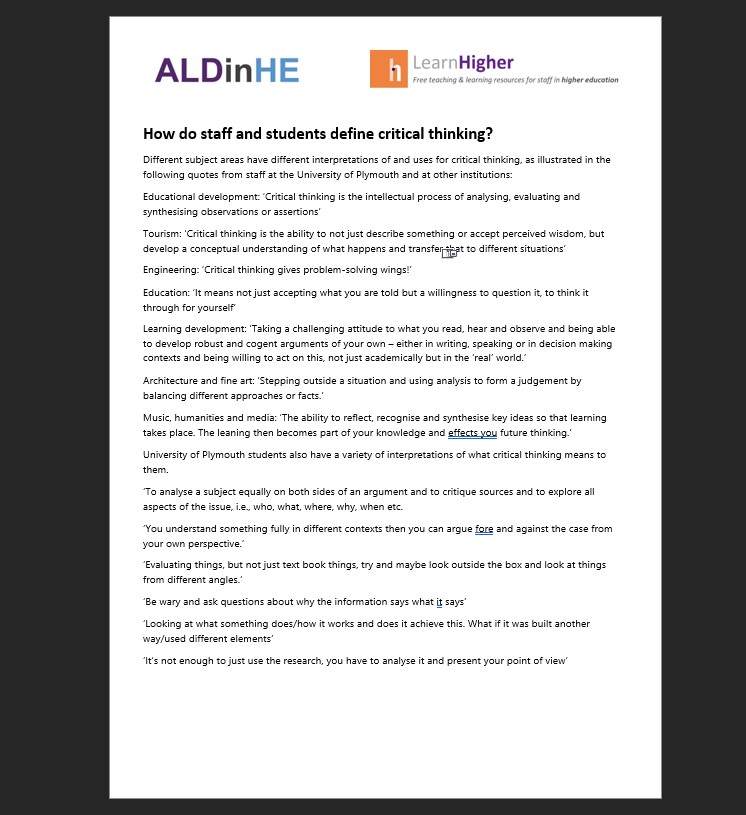A brief introduction to staff and students interpretations of critical thinking
How do staff and students define critical thinking?
Media Type: Document | Resource Duration: 10 minutes
|
Number of downloads: 59
| |
Only logged in customers who have purchased this product may leave a review.
Additional Resource Information
View resources by author(s): LearnHigher
Institution(s): LearnHigher
License: Creative Commons licence (4.0)
Categories: LearnHigher Resources | Critical Thinking and Reflection
Published: 26/01/2012



Reviews
There are no reviews yet.